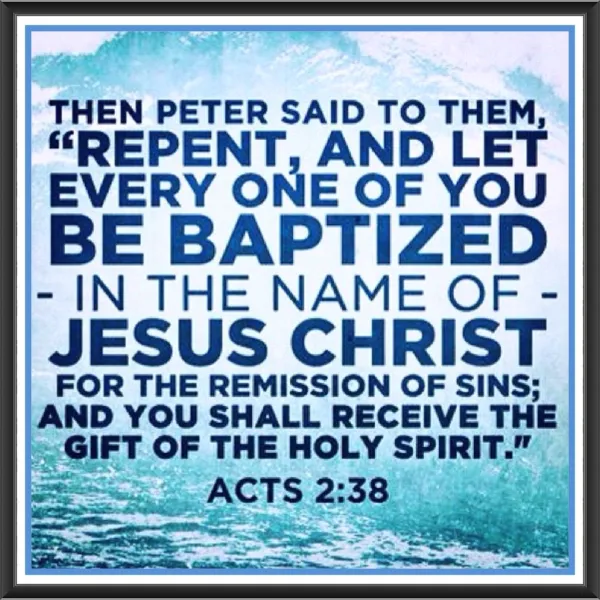Baptism not only demonstrates one has been saved by Christ and added into Christ’s body, but also that Christ occupies the position of Lord or Master in one’s life (Rom. 6). Therefore, if these people truly wished to have forgiveness of sins, then they needed to publicly demonstrate an allegiance to the Risen Lord, who happens to be the same one they despised less than 2 months before. If they refused to do that, it’s absolutely true that they could not claim to have forgiveness of sins, nor the gift the Holy Spirit. Thus, their baptism in Acts 2 would testify to what the Apostle Paul would write later, towards the beginning of Eph. 4, in that great passage on Christian unity, that there is one Lord, one faith, one baptism…
Ultimately then, the command to be baptized in Acts 2:38 will function as a visual demonstration that one has partaken of those saving and unifying realities. This corresponds precisely to what we concluded last week; to associate oneself with Jesus Christ in the way that the gospel demands has a cost associated with it and has noticeable fruit. These Jews, who were responding to Peter’s message and being called to be baptized in the name of Jesus Christ, would be giving public allegiance to the one whom the Jewish religious leaders hated and the Romans crucified as a criminal.
This exemplifies the truth that all Christians must count the cost and take up their cross in order to be Christ’s disciple. So how has Christ called you to associate yourself with him? Perhaps it’s clinging to the truth in a difficult family situation or maybe it’s standing for what Christ says is right in a work environment or maybe it’s saying some things and making certain decisions with regards to friendships. In the end, our association with Jesus Christ is not to be a private matter; if Christ is our Lord, then that will be repeatedly and consistently obvious to others who know us.

